Norway Travel Guide
Norway Travel Guide – prepare your trip to Norway with our practical guide: where to go, what to do, food, rooftops, how to get around, safety and more.
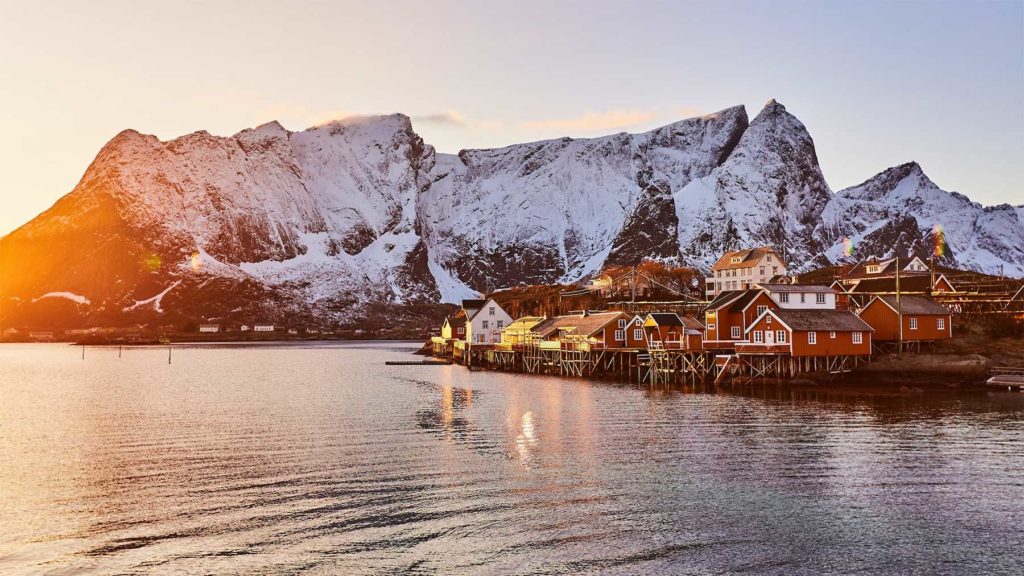
Norway is a stunningly beautiful country located in Northern Europe, with a diverse range of landscapes and breathtaking natural wonders. Known for its fjords, mountains, and glaciers, Norway offers a unique travel experience that is both serene and adventurous. The country is also famous for its rich Viking history, picturesque fishing villages, and bustling modern cities.
The capital city of Norway is Oslo, which offers a mix of modern architecture and ancient history. The city is home to numerous museums, including the Munch Museum and the Viking Ship Museum. Other popular destinations include Bergen, which is known for its colorful wooden houses and historic port, and the scenic village of Flam, which is situated at the end of the picturesque Aurlandsfjord.
Whether you’re interested in exploring the great outdoors, immersing yourself in Norway’s fascinating history and culture, or simply enjoying the country’s delicious cuisine, Norway has something for everyone. With its stunning natural scenery and welcoming people, Norway is truly a traveler’s paradise.
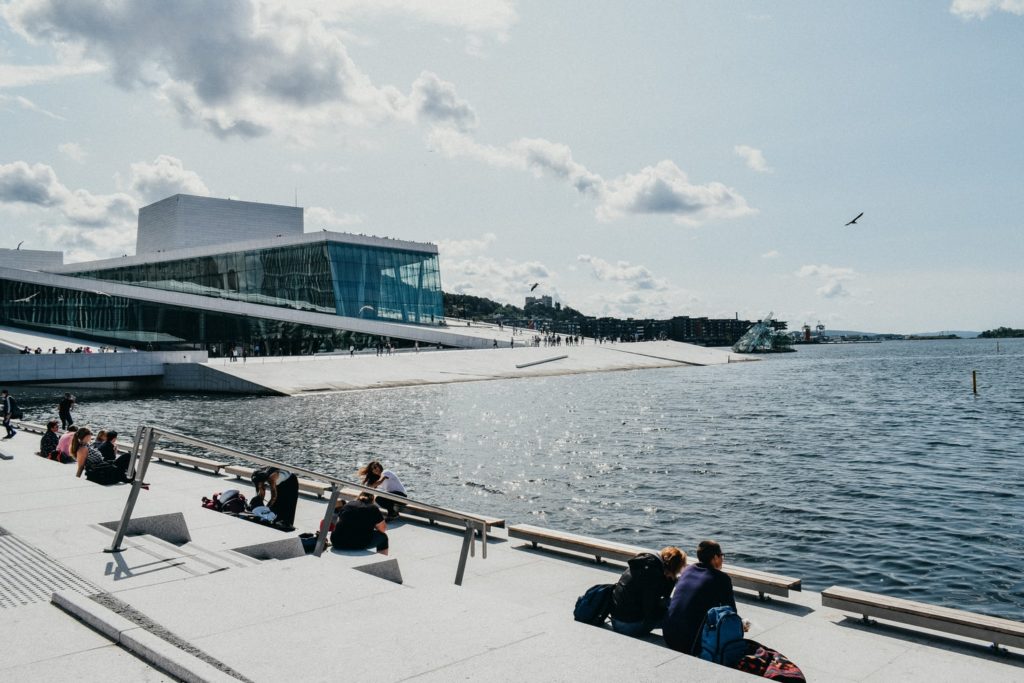
Travel to Norway
The best time to go to Norway – the 4 seasons in Norway
The best time to visit Norway largely depends on what you’re looking to experience during your trip. Summer is the most popular time for tourists, as the weather is typically mild and the days are long, allowing for more time to explore the outdoors. However, winter also offers its own unique charm, particularly for those interested in winter sports such as skiing and snowboarding.
Norway experiences four distinct seasons:
Spring (March to May): Spring in Norway is generally cool and damp, with snow still lingering in the mountains. However, this is also the time when the country’s flora and fauna begin to bloom, making it a great time for nature enthusiasts.
Summer (June to August): Summer is the peak tourist season in Norway, with temperatures ranging from mild to warm, and long hours of daylight. This is the best time for outdoor activities such as hiking, kayaking, and fishing.
Autumn (September to November): Autumn in Norway is marked by colorful foliage and cooler temperatures. This is a great time for scenic drives and hikes, as well as for sampling Norway’s delicious harvest foods.
Winter (December to February): Winter in Norway is cold and snowy, with limited daylight. However, this is also the best time for winter sports such as skiing, snowboarding, and dog sledding, as well as for witnessing the mesmerizing Northern Lights.
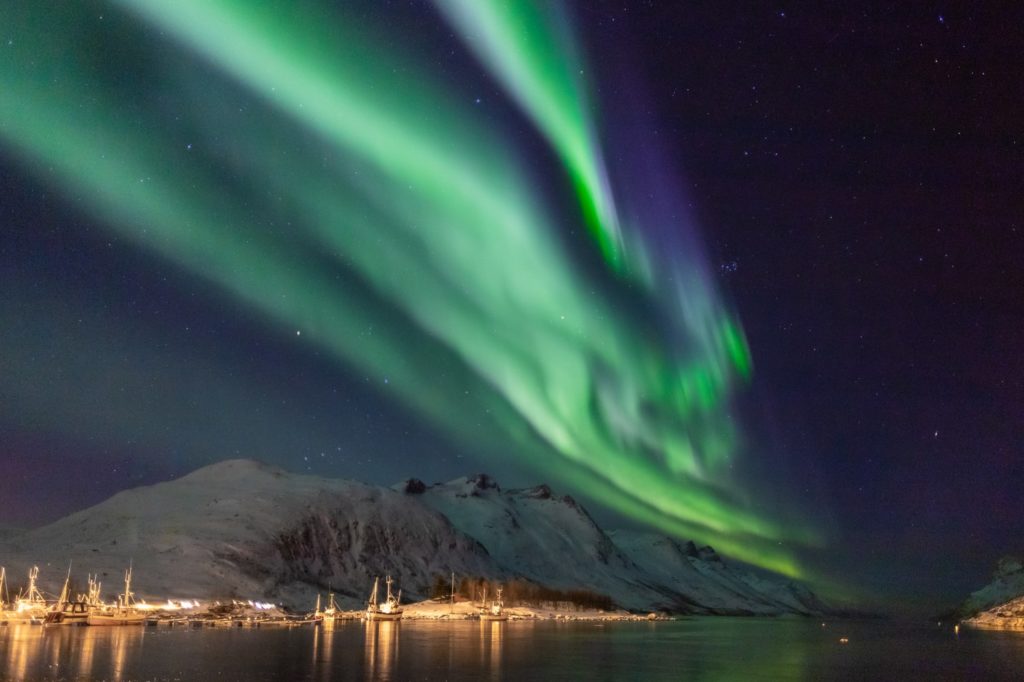
Entry Requirements for Norway
Whether or not you need a visa to travel to Norway depends on your nationality and the purpose of your visit.
If you are a citizen of the United States or a European Union country, you do not need a visa for short-term visits to Norway for tourism or business purposes, as long as your stay is no longer than 90 days within a 180-day period.
If you are a citizen of a country outside the EU or the United States, you may need a visa to enter Norway. You should check with the Norwegian embassy or consulate in your home country to determine the visa requirements and application process.
In general, visitors to Norway are required to have a valid passport that is valid for at least three months beyond the planned stay, and may be required to provide additional documentation such as a return ticket or proof of sufficient funds to cover the expenses of the trip.

How to get around Norway
There are several ways to get around Norway, depending on your preferences and budget. Here are some options:
Public transportation: Norway has a well-developed public transportation system, with trains, buses, and ferries that connect major cities and smaller towns. The train system is operated by the Norwegian State Railways (NSB), while bus services are operated by various regional and national companies. Public transportation is generally reliable and efficient, but may be more expensive than other options.
Car rental: Renting a car in Norway is a popular way to explore the country at your own pace. There are several international and local car rental companies operating in Norway, and the country has a well-maintained road network. However, driving in Norway can be challenging due to the country’s mountainous terrain and narrow, winding roads.
Cycling: Norway is a great destination for cycling enthusiasts, with numerous cycling routes and trails that offer stunning scenery and challenging terrain. Bicycles can be rented in major cities and tourist destinations, and many of Norway’s towns and cities are bike-friendly.
Domestic flights: Norway has several domestic airlines that operate flights between major cities and smaller towns. This is a good option for travelers who want to cover long distances quickly, but can be more expensive than other options.
Walking: Norway’s cities and towns are generally pedestrian-friendly, with well-maintained sidewalks and pedestrianized areas. Walking is a great way to explore Norway’s urban areas and take in the local culture. However, it may not be practical for longer distances or in more rural areas.
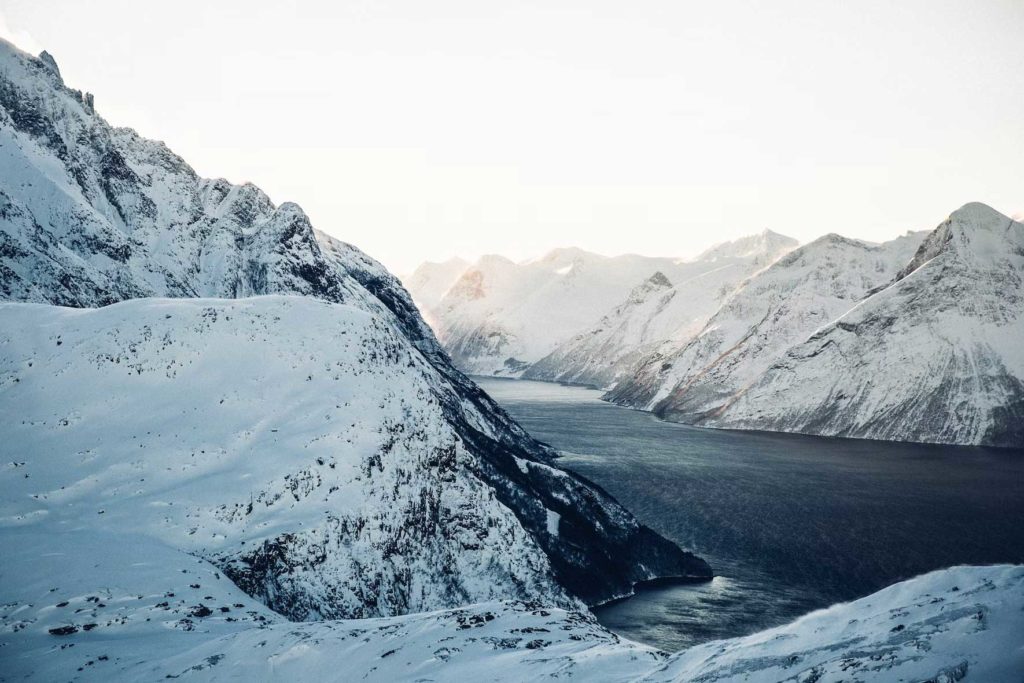
Explore the regions in Norway
Northern Norway
Northern Norway is a region in Norway that encompasses the northernmost part of the country, including several counties such as Finnmark, Nordland, and Troms. This region is located above the Arctic Circle and is known for its stunning natural scenery, making it a popular destination for tourists who are looking for an authentic Arctic experience.
One of the main points of interest in Northern Norway is the city of Tromsø, which is often called the “Gateway to the Arctic”. Tromsø is a vibrant city with a rich cultural scene and a wide range of attractions, including the Arctic Cathedral, the Polar Museum, and the Tromsø Bridge. Visitors can also take a cable car up to the top of Mount Storsteinen to enjoy panoramic views of the city and the surrounding fjords.
Another major attraction in Northern Norway is the Lofoten Islands, a group of islands known for their dramatic landscapes and stunning scenery. The islands are home to picturesque fishing villages, rugged mountains, and deep fjords, making it a great destination for outdoor enthusiasts. Visitors can go hiking, fishing, or kayaking, and can also take boat trips to see the Northern Lights in the winter months.

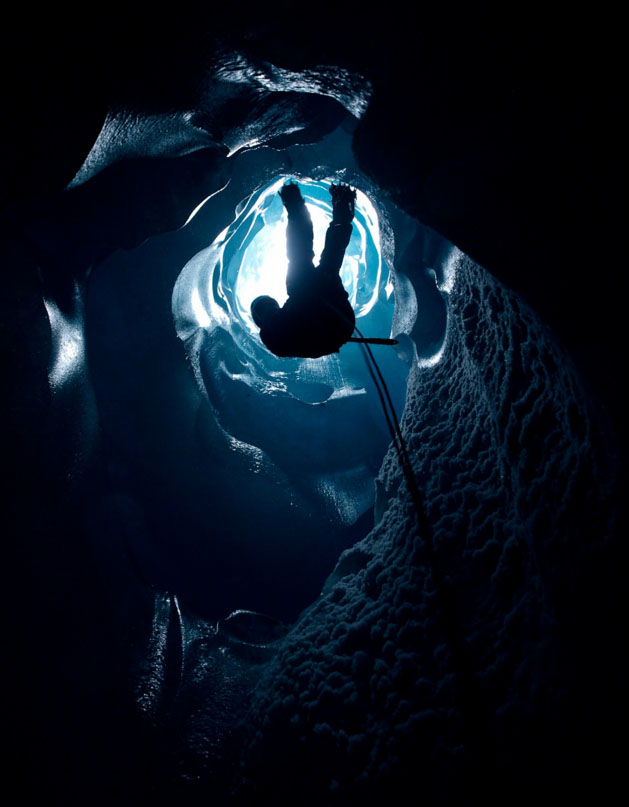
Trøndelag
Trøndelag is a region located in central Norway, consisting of two counties: Sør-Trøndelag and Nord-Trøndelag. The region is known for its rich history, stunning landscapes, and vibrant cultural scene. One of the main points of interest in Trøndelag is the city of Trondheim, which was the capital of Norway during the Viking Age.
Trondheim is a historic city with a charming atmosphere, known for its colorful wooden buildings, medieval architecture, and the famous Nidaros Cathedral, which is the largest medieval building in Scandinavia. Visitors can explore the cobbled streets of the old town, visit museums such as the Trondheim Art Museum and the Trøndelag Folk Museum, and enjoy a wide range of cultural events and festivals throughout the year.
Another point of interest in Trøndelag is the island of Hitra, which is located off the coast of central Norway. Hitra is a popular destination for outdoor enthusiasts, with opportunities for fishing, hunting, hiking, and kayaking. The island is also home to several historic landmarks, including the medieval Hitra Church and the Trondenes Fort.
Finally, Trøndelag is also known for its stunning mountain landscapes, including the Trollheimen mountains. The Trollheimen mountain range is a popular destination for hikers and climbers, offering breathtaking views of the surrounding valleys and fjords.

Western Norway
Western Norway is a region in Norway known for its spectacular natural beauty and unique landscapes. The region is located along the country’s western coast and is home to numerous fjords, glaciers, and waterfalls, as well as charming towns and villages.
One of the main points of interest in Western Norway is the UNESCO World Heritage-listed Geirangerfjord, which is considered one of the most beautiful fjords in the world. Visitors can take a boat tour of the fjord to admire the breathtaking scenery, which includes towering cliffs, cascading waterfalls, and snow-capped peaks.
Another popular destination in Western Norway is the city of Bergen, which is known for its colorful wooden houses, historic wharf, and cultural attractions. Landmarks include the UNESCO-listed Bryggen wharf, the Hanseatic Museum, and the Bergen Fish Market. Visitors can also take a funicular to the top of Mount Fløyen for panoramic views of the city and surrounding fjords.
The Jostedalsbreen glacier is another major point of interest in Western Norway. This is the largest glacier in continental Europe, covering an area of over 480 square kilometers. Visitors can take guided tours of the glacier, hike in the surrounding mountains, or visit the Jostedalsbreen National Park.
Other notable destinations in Western Norway include the charming village of Flåm, which is situated at the end of the Aurlandsfjord and is known for its scenic railway, and the picturesque village of Balestrand, which is home to a number of historic landmarks and is situated along the Sognefjord, Norway’s longest and deepest fjord.

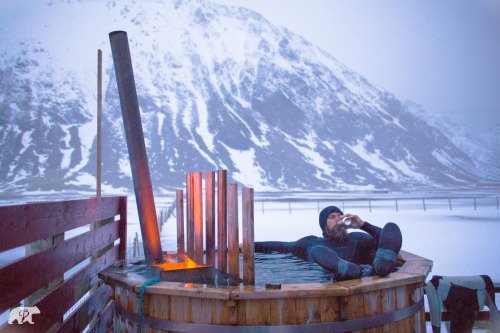
Eastern Norway
Eastern Norway is a region in Norway that includes the country’s capital city of Oslo, as well as the surrounding areas. This region is known for its rich cultural heritage, vibrant urban centers, and stunning natural landscapes.
One of the main points of interest in Eastern Norway is the Viking Ship Museum, which is located in Oslo and houses three of the world’s best-preserved Viking ships, as well as a number of artifacts and archaeological finds. Other cultural attractions in Oslo include the Akershus Fortress, which dates back to the medieval era, and the Vigeland Sculpture Park, which features over 200 sculptures by Norwegian artist Gustav Vigeland.
Eastern Norway is also known for its stunning natural landscapes, which include the nearby mountains and forests. Visitors can enjoy hiking, skiing, and other outdoor activities in the nearby Nordmarka Forest or the Tryvann Ski Resort, which is just a short distance from Oslo.
Other notable destinations in Eastern Norway include the city of Drammen, which is known for its vibrant cultural scene and historic landmarks, such as the Drammen Theatre and the Gulskogen Manor. The city of Hamar, located on the shores of Lake Mjøsa, is also a popular destination, offering a range of cultural attractions and outdoor activities, including skiing, ice skating, and cycling.
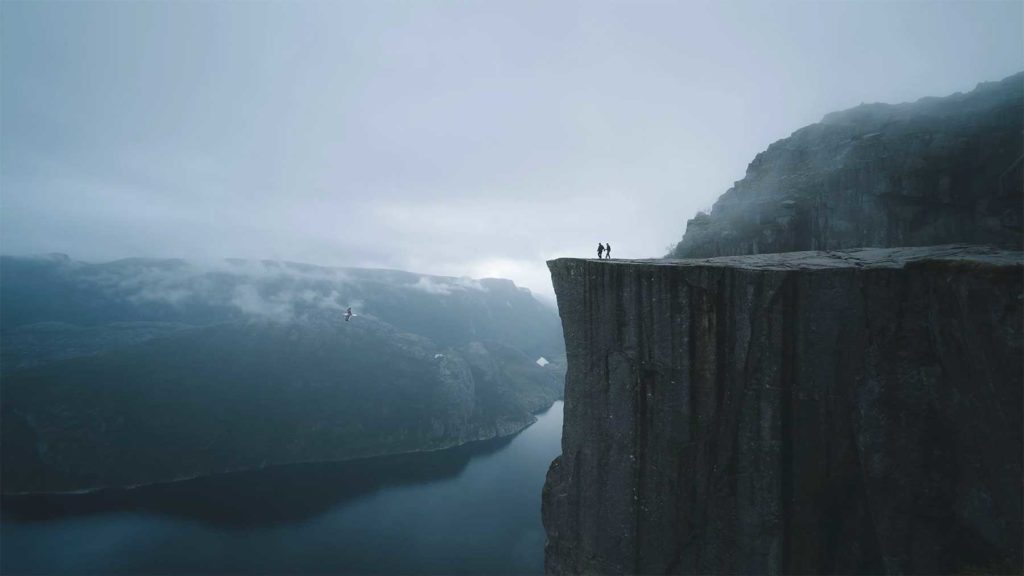
Southern Norway
Southern Norway is a region in Norway that includes the country’s southern coast, stretching from the border with Sweden to the western edge of the Oslofjord. This region is known for its rugged coastline, rocky islands, and sandy beaches, making it a popular destination for outdoor enthusiasts and beach-goers alike.
One of the main points of interest in Southern Norway is the picturesque town of Kristiansand, which is situated on the southern coast and is known for its charming old town, bustling harbor, and vibrant cultural scene. Visitors can explore the local museums and galleries, take a stroll along the boardwalk, or visit the nearby Kristiansand Zoo and Amusement Park.
Another notable destination in Southern Norway is the town of Mandal, which is situated on a peninsula and is known for its white sandy beaches and crystal-clear waters. Visitors can enjoy swimming, kayaking, or simply relaxing on the beach. The town is also home to a number of cultural attractions, including the Mandal Museum and the Fjære Church.
The historic city of Arendal is another popular destination in Southern Norway, offering a range of cultural and outdoor activities. Visitors can explore the picturesque old town, visit the Arendal Maritime Museum, or take a boat trip around the nearby islands.
Southern Norway is also known for its opportunities for outdoor activities, including hiking, kayaking, and sailing along the coast. The region is home to numerous hiking trails, including the famous Setesdal Trail, as well as several national parks and nature reserves.
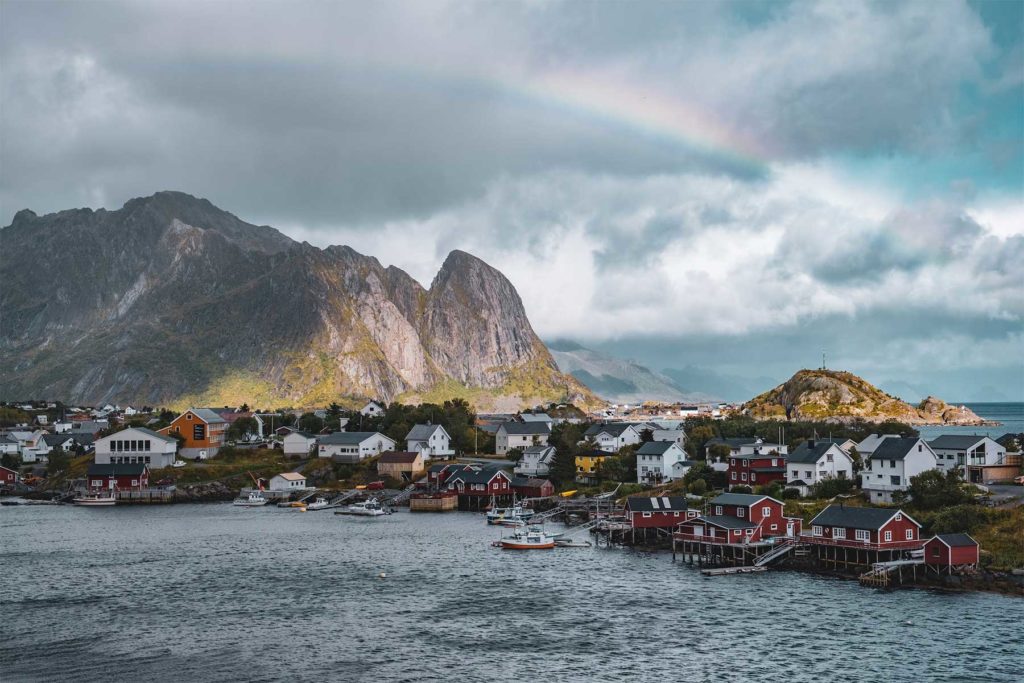
Explore the cities in Norway
Oslo
Oslo is the capital city of Norway, located on the southeastern coast of the country. The city is known for its unique blend of modern and historic architecture, as well as its lively cultural scene and stunning natural beauty.
One of the main landmarks in Oslo is the Viking Ship Museum, which features three Viking ships that date back to the 9th century. The museum is located on the Bygdøy peninsula and is a popular destination for visitors who are interested in exploring the city’s Viking history.
Another popular attraction in Oslo is the Akershus Fortress, a historic castle that dates back to the 14th century. Visitors can explore the castle’s grounds and learn about its history, or simply enjoy the stunning views of the Oslofjord.
Oslo is also home to the Vigeland Sculpture Park, a unique outdoor museum that features over 200 bronze, granite, and cast iron sculptures created by the Norwegian sculptor Gustav Vigeland. The park is a popular destination for art lovers and offers a peaceful retreat from the city’s bustling streets.
Fun things to do in Oslo include hiking in the nearby mountains, which offer stunning views of the surrounding area, or exploring the trendy Grünerløkka neighborhood, which is known for its unique shops, cafes, and restaurants. Visitors can also enjoy the local food and drink scene, which features a range of traditional Norwegian cuisine, as well as international options.
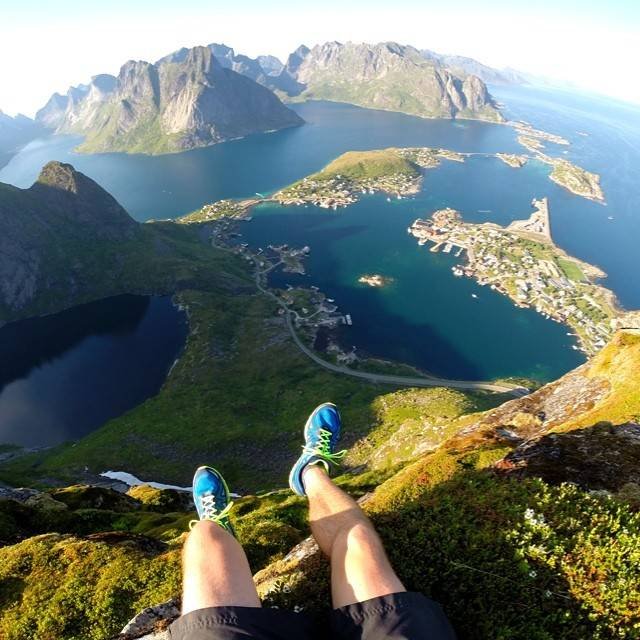
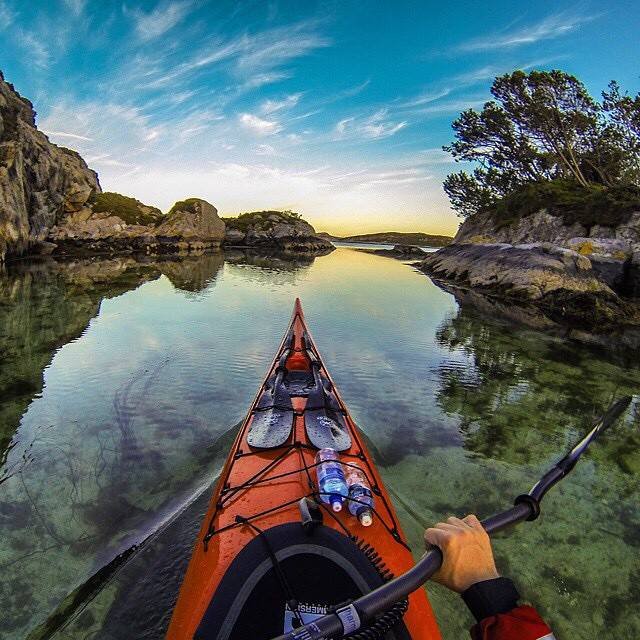
Bergen
Bergen is a picturesque city located on Norway’s western coast, known for its rich history, stunning natural scenery, and vibrant cultural scene. The city is surrounded by mountains, fjords, and forests, making it a popular destination for outdoor enthusiasts and nature lovers.
One of the main landmarks in Bergen is the UNESCO World Heritage-listed Bryggen wharf, a charming collection of colorful wooden buildings that date back to the 14th century. Visitors can wander through the narrow alleyways and alleys, admiring the unique architecture and learning about the city’s history.
Another popular attraction in Bergen is the Fish Market, a bustling hub of activity where visitors can sample fresh seafood and other local delicacies. The market is a popular destination for locals and visitors alike, offering a wide variety of fresh fish, shrimp, and other seafood.
Fun things to do in Bergen include visiting the city’s numerous art museums, which showcase works by both local and international artists. Visitors can also take a boat tour of the fjords, go hiking in the nearby mountains, or simply relax and enjoy the local scenery.
Bergen is also known for its vibrant cultural scene, with numerous festivals and events throughout the year. The city is home to several theaters, music venues, and galleries, as well as a lively nightlife scene with numerous bars and clubs.
Finally, visitors to Bergen can take the Fløyen funicular railway up to the top of Mount Fløyen, which offers stunning views of the city and surrounding area. The railway is a popular attraction and provides visitors with a unique perspective on the city’s natural beauty.
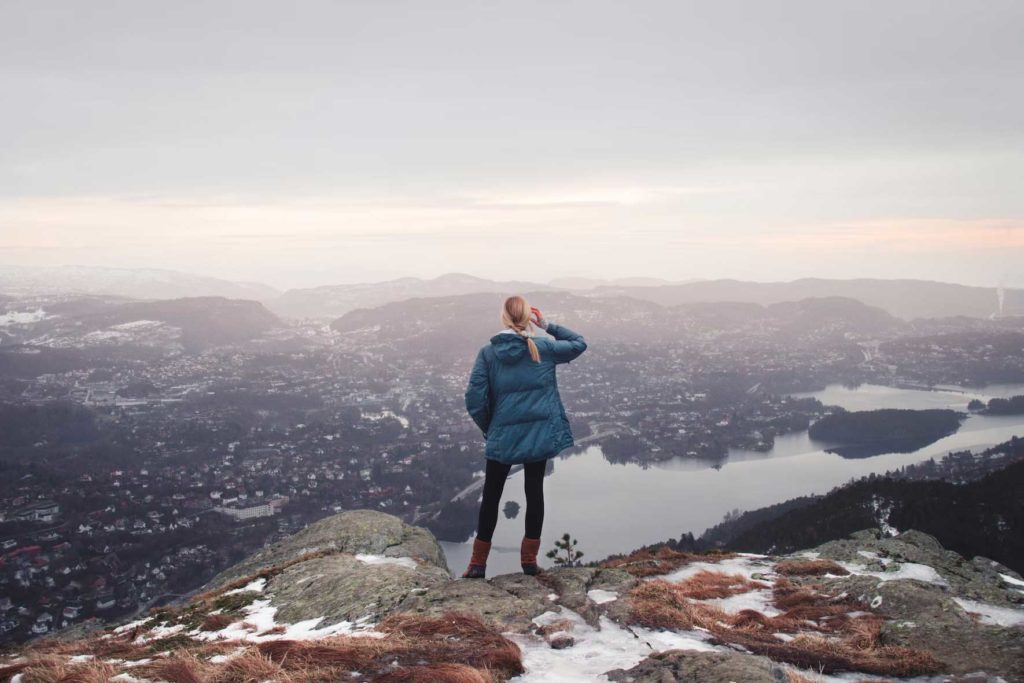
Trondheim
Trondheim is a charming city located in central Norway, known for its rich history, stunning architecture, and lively cultural scene. The city is home to numerous landmarks and attractions, making it a popular destination for visitors who are interested in exploring the country’s cultural heritage.
One of the main landmarks in Trondheim is the Nidaros Cathedral, a stunning Gothic cathedral that dates back to the 11th century. The cathedral is known for its intricate architecture and historic significance, making it a must-visit destination for visitors to the city. Visitors can also explore the nearby Archbishop’s Palace, a beautifully preserved medieval palace that now houses a museum.
Trondheim is also known for its colorful wooden buildings, particularly in the historic Bakklandet district. Visitors can wander through the narrow streets and alleys, admiring the charming architecture and local shops and cafes.
Fun things to do in Trondheim include exploring the local food and drink scene, which is known for its unique and flavorful dishes. Visitors can enjoy traditional Norwegian cuisine, including seafood, reindeer, and local cheeses, as well as craft beer and other local drinks.
Trondheim is also a great destination for outdoor enthusiasts, offering numerous opportunities for hiking, biking, and other outdoor activities. Visitors can take a riverboat cruise along the Nidelva River, or hike in the nearby mountains and forests.

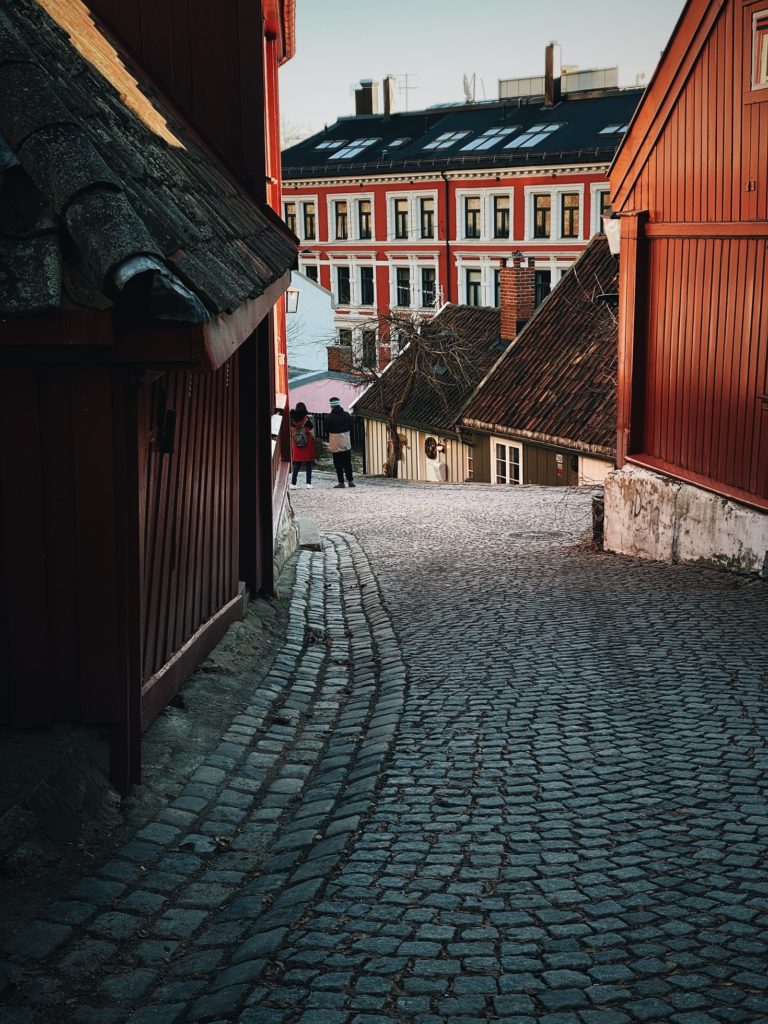
Stavanger
Stavanger is a charming city located on the southwestern coast of Norway, known for its unique blend of modern industry and historic charm. The city is known for its role in the oil industry, as well as its charming old town and picturesque coastal scenery.
One of the main landmarks in Stavanger is the Stavanger Cathedral, a beautiful medieval church that dates back to the 12th century. The cathedral is known for its stunning architecture and historic significance, making it a popular destination for visitors who are interested in exploring the city’s cultural heritage.
Another popular attraction in Stavanger is the Norwegian Petroleum Museum, which tells the story of Norway’s oil industry through interactive exhibits and multimedia displays. The museum is located on the city’s waterfront and offers visitors a unique perspective on the country’s history and modern economy.
Stavanger is also known for its charming old town, known as Gamle Stavanger, which is home to a collection of colorful wooden houses and cobbled streets. Visitors can explore the area on foot, enjoying the local shops and cafes, or simply admiring the architecture and history of the area.
Fun things to do in Stavanger include hiking in the nearby mountains, which offer stunning views of the surrounding fjords and coastline. Visitors can also take boat tours of the fjords, go fishing, or simply relax on the local beaches. The city is also home to several art museums, including the Stavanger Art Museum and the Rogaland Art Museum, which showcase works by both local and international artists.

Tromsø
Tromsø is a great city located above the Arctic Circle in Norway, known for its stunning natural scenery, unique culture, and lively atmosphere. The city is surrounded by rugged mountains, deep fjords, and pristine wilderness, making it a popular destination for outdoor enthusiasts and nature lovers.
One of the main landmarks in Tromsø is the Arctic Cathedral, an iconic architectural masterpiece that stands out against the city’s stunning backdrop. Visitors can take a guided tour of the cathedral, attend a concert, or simply admire the building’s unique design.
Another popular attraction in Tromsø is the Polar Museum, which showcases the city’s rich history of Arctic exploration and the fishing industry. The museum features exhibits on polar bears, the Northern Lights, and the history of Arctic expeditions, making it a fascinating destination for history buffs and nature lovers alike.
Tromsø is also known for its vibrant cultural scene, with numerous festivals and events throughout the year, including the Northern Lights Festival and the Tromsø International Film Festival. Visitors can enjoy concerts, theater performances, and art exhibits throughout the city.
Fun things to do in Tromsø include dog sledding, a popular winter activity that allows visitors to experience the thrill of mushing a team of huskies through the snowy wilderness. Visitors can also go snowmobiling, skiing, or snowshoeing in the surrounding mountains, or take a boat tour to see the Northern Lights in the winter months.
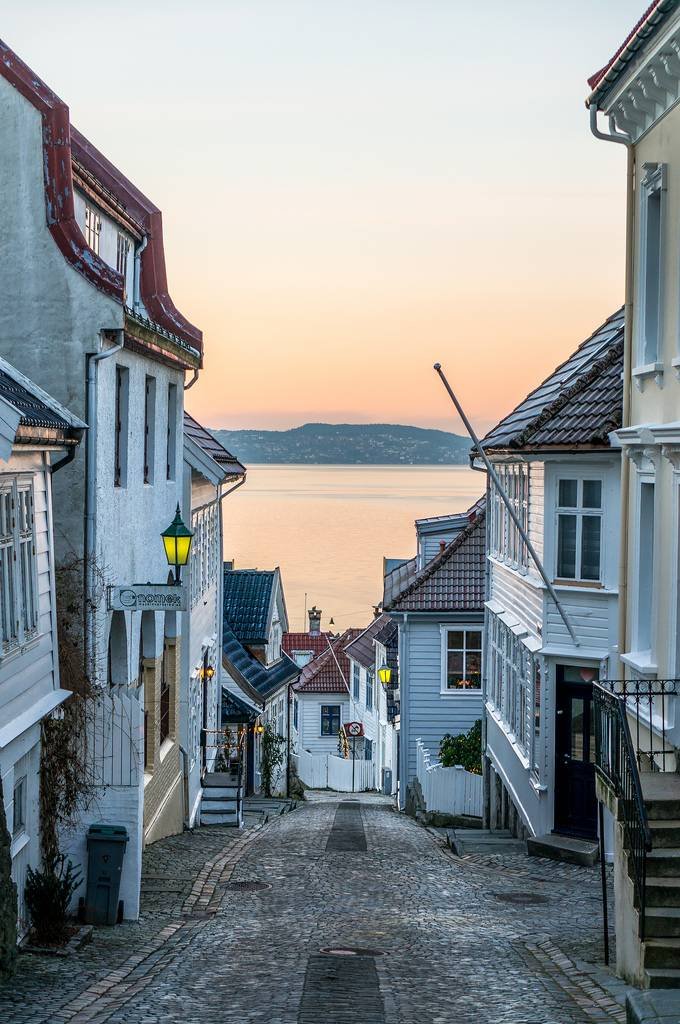
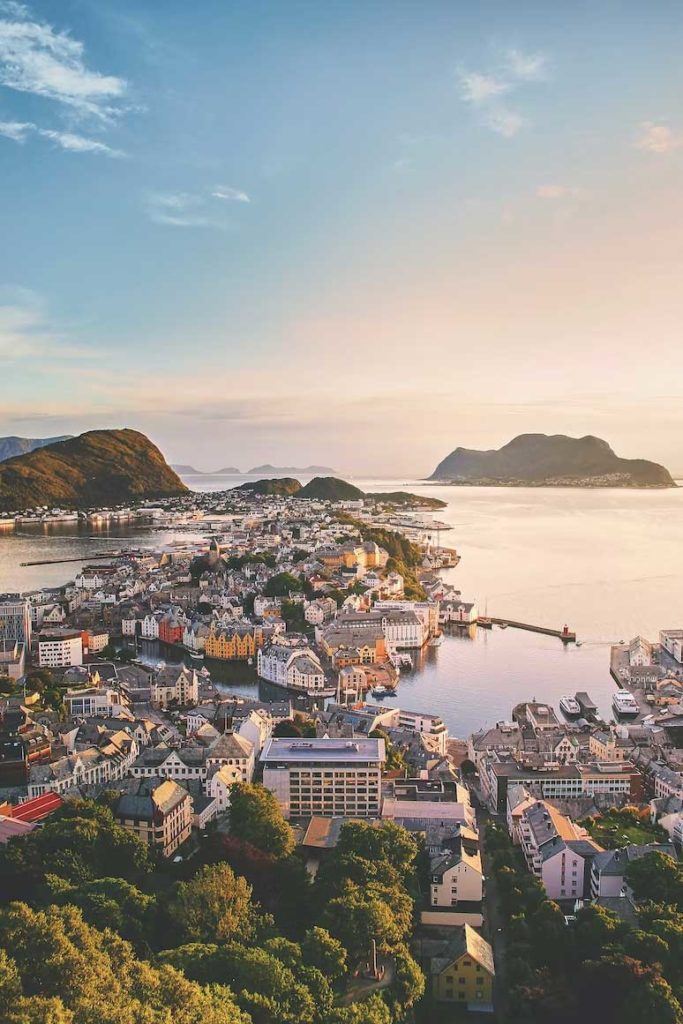
Alesund
Alesund is a charming coastal town located in western Norway, known for its Art Nouveau architecture, stunning scenery, and vibrant cultural scene. Alesund is a popular destination for tourists, who come to explore the town’s unique architectural heritage, hike in the nearby mountains and fjords, and enjoy the local food and drink scene. One of the main attractions in Alesund is the town’s Art Nouveau architecture, which was built in the aftermath of a devastating fire in 1904. The town was rebuilt in the Art Nouveau style, featuring ornate buildings with intricate facades and details.
Visitors can take a walking tour of the town to admire the unique architecture and learn about its history. Another popular attraction in Alesund is the nearby islands and fjords, which offer breathtaking scenery and opportunities for outdoor activities such as hiking, kayaking, and fishing. The nearby Geirangerfjord, a UNESCO World Heritage site, is particularly popular among tourists for its dramatic landscapes and stunning waterfalls. Alesund also has a vibrant cultural scene, with numerous festivals and events throughout the year, including the Alesund International Jazz Festival and the Alesund Food Festival. The town is home to several museums and galleries, including the Jugendstilsenteret Museum, which showcases the town’s Art Nouveau heritage.
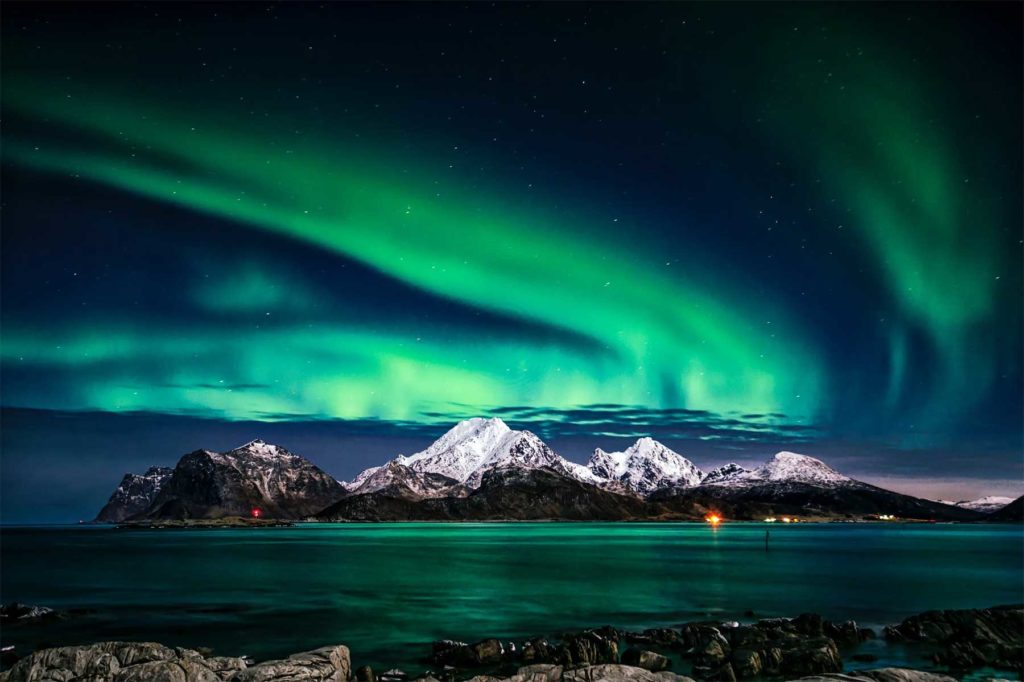
Norway’s culture and way of life
Norway is a country with a rich and unique culture, shaped by its history, geography, and natural resources. The country’s culture is characterized by a strong sense of community, a love of nature, and a deep appreciation for art and music.
One of the defining features of Norwegian culture is its emphasis on social welfare and equality. The country has a strong welfare system that provides support for all citizens, regardless of income or social status. This focus on equality is reflected in the country’s education system, which is free for all students, and its healthcare system, which provides universal coverage.
Norwegians are also known for their love of nature and outdoor activities. The country is blessed with stunning natural scenery, including fjords, mountains, and forests, and many Norwegians enjoy hiking, skiing, fishing, and other outdoor activities. This connection to nature is also reflected in the country’s food culture, which emphasizes fresh, local ingredients and traditional dishes such as seafood, berries, and reindeer.
Art and music are also important parts of Norwegian culture. The country is home to numerous art museums and galleries, as well as a thriving contemporary art scene. Music is also an important part of the culture, with traditional folk music and dance being popular, as well as more modern genres such as pop and rock.
Another defining feature of Norwegian culture is the concept of “dugnad”, which refers to a community effort to complete a task or project. This could be anything from cleaning up a park to building a community center, and it reflects the country’s strong sense of community and shared responsibility.

Experiences to live in Norway
See the Northern Lights
The Northern Lights, also known as the Aurora Borealis, is a stunning natural phenomenon that occurs when charged particles from the sun collide with particles in the Earth’s atmosphere, causing a colorful display of lights in the sky. Norway’s Northern region is one of the best places in the world to witness this magical phenomenon, thanks to its position above the Arctic Circle. Tromsø and the Lofoten Islands are both popular destinations for viewing the Northern Lights, offering a unique and unforgettable experience for travelers.
Tromsø is often referred to as the “Gateway to the Arctic” and is known for its vibrant cultural scene and stunning natural scenery. Visitors can take part in Northern Lights tours, which typically involve traveling by bus or boat to a remote location away from the city lights. The Lofoten Islands, on the other hand, offer a more remote and rugged experience, with a variety of activities available such as dog sledding, snowmobiling, and snowshoeing. Whatever your choice, seeing the Northern Lights is a once-in-a-lifetime experience that is sure to leave you in awe of the natural world.
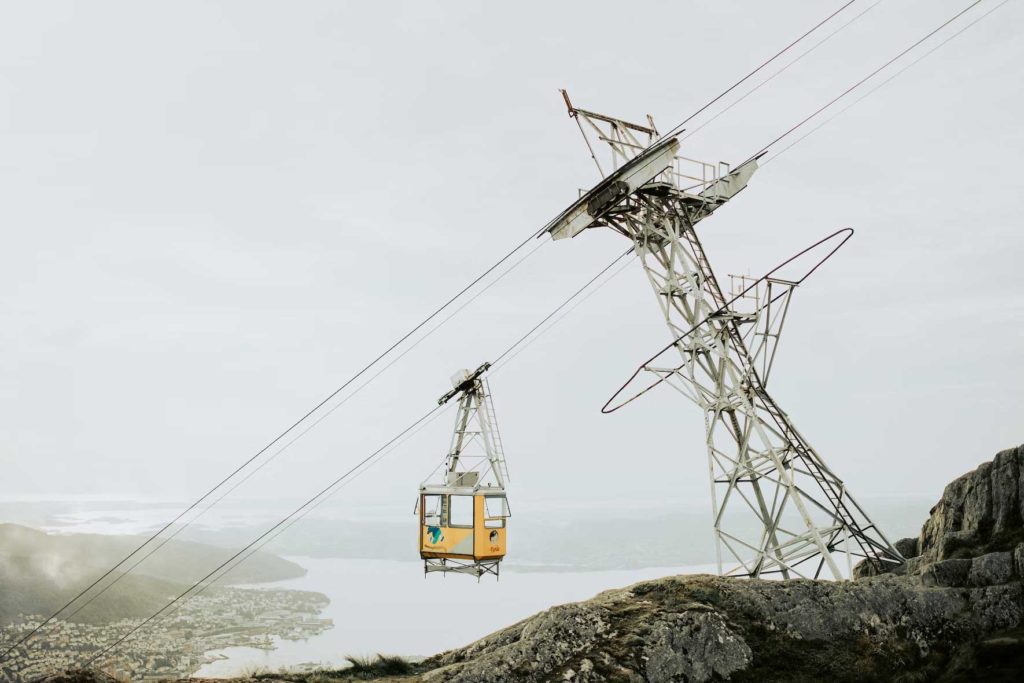
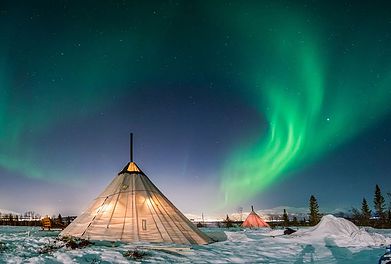
Hike in the mountains
Norway’s rugged terrain and stunning natural scenery make it a perfect destination for hiking enthusiasts. The country is home to numerous mountain ranges, including the Jotunheimen and Rondane National Parks, which offer some of the best hiking opportunities in the country. These parks are filled with scenic hiking trails, ranging from easy walks to more challenging treks that take hikers through some of Norway’s most beautiful landscapes.
Hiking in Norway is not only a great way to experience the country’s stunning natural beauty, but it’s also a great way to get some exercise and enjoy the outdoors. Many of Norway’s hiking trails offer breathtaking views of fjords, mountains, and glaciers, and hikers can also spot local wildlife such as reindeer and elk. Whether you’re an experienced hiker or a beginner, Norway’s mountains offer something for everyone, making it a must-do experience for any traveler.

Take a fjord cruise
Norway is home to some of the world’s most dramatic and stunning fjords, including the Geirangerfjord and the Nærøyfjord. Taking a fjord cruise is a great way to experience these natural wonders up close and get a unique perspective on the country’s rugged coastline. Fjord cruises typically involve traveling by boat through narrow fjords, passing by towering cliffs, cascading waterfalls, and quaint coastal villages.
The Geirangerfjord region, in particular, is one of the most popular destinations for fjord cruises. The region is known for its stunning natural beauty, with snow-capped peaks, crystal-clear water, and dramatic rock formations. Visitors can take a ferry ride along the majestic Geirangerfjord, which is surrounded by steep cliffs and cascading waterfalls. The fjord is also a UNESCO World Heritage Site, recognized for its unique and awe-inspiring natural beauty. Whether you’re interested in photography, sightseeing, or simply enjoying the peaceful tranquility of the fjords, a fjord cruise is a must-do experience for any visitor to Norway.
Visit a stave church
Stave churches are a unique feature of Norway’s cultural heritage. These medieval wooden churches are made from timber and feature intricate carvings and decorations that are unique to Norway. Many of these churches were built in the 12th and 13th centuries and have survived to this day, providing a fascinating glimpse into Norway’s rich history.
Visiting a stave church, such as the Borgund Stave Church or the Urnes Stave Church, is a great way to learn about Norway’s cultural heritage and appreciate the country’s architectural and artistic traditions. Many of these churches are located in remote and picturesque locations, surrounded by natural beauty and serene landscapes. Visitors can marvel at the intricate carvings and decorations that adorn the churches, and learn about the fascinating history and symbolism behind each detail. Whether you’re interested in history, art, or architecture, visiting a stave church is a must-do experience for anyone interested in exploring Norway’s cultural heritage.

Try local cuisine
Norwegian cuisine is a reflection of the country’s rich cultural heritage and unique geographical location. Norway’s cuisine is known for its emphasis on fresh seafood, locally sourced ingredients, and traditional dishes that have been passed down through generations. Some of the most popular Norwegian dishes include smoked salmon, pickled herring, and lutefisk, which is made from dried and cured fish.
Trying local cuisine is a great way to experience the culture of Norway and get a taste of the country’s unique flavors. In addition to seafood, Norwegian cuisine also features local cheeses, such as brunost, a brown cheese made from whey. Traditional dishes such as reindeer stew, served with lingonberry sauce, are also a must-try for visitors to Norway. Whether you’re interested in fine dining or casual eateries, Norway offers a wide range of dining options to suit all tastes and budgets. Trying local cuisine is an essential part of any trip to Norway, and it’s a great way to experience the country’s culture and culinary traditions.
Take a train journey
Norway is renowned for its stunning natural landscapes, and one of the best ways to experience this beauty is by taking a train journey through the country’s rugged terrain. The Flåm Railway is one of Europe’s most scenic railway journeys, and it offers visitors the opportunity to experience Norway’s stunning mountains, fjords, and waterfalls in a unique and unforgettable way. The railway journey starts from the small village of Flåm and takes passengers through some of Norway’s most breathtaking landscapes, including steep mountains, deep fjords, and cascading waterfalls.
The Flåm Railway is known for its spectacular views and is a popular destination for travelers seeking to experience Norway’s natural beauty. The railway journey takes around an hour and offers passengers stunning views of the Aurlandsfjord and Nærøyfjord, both of which are UNESCO World Heritage Sites. Along the way, passengers can enjoy the stunning scenery and learn about the history and culture of the region from knowledgeable guides. Whether you’re a train enthusiast or simply interested in experiencing the natural beauty of Norway, taking a train journey on the Flåm Railway is a must-do experience.
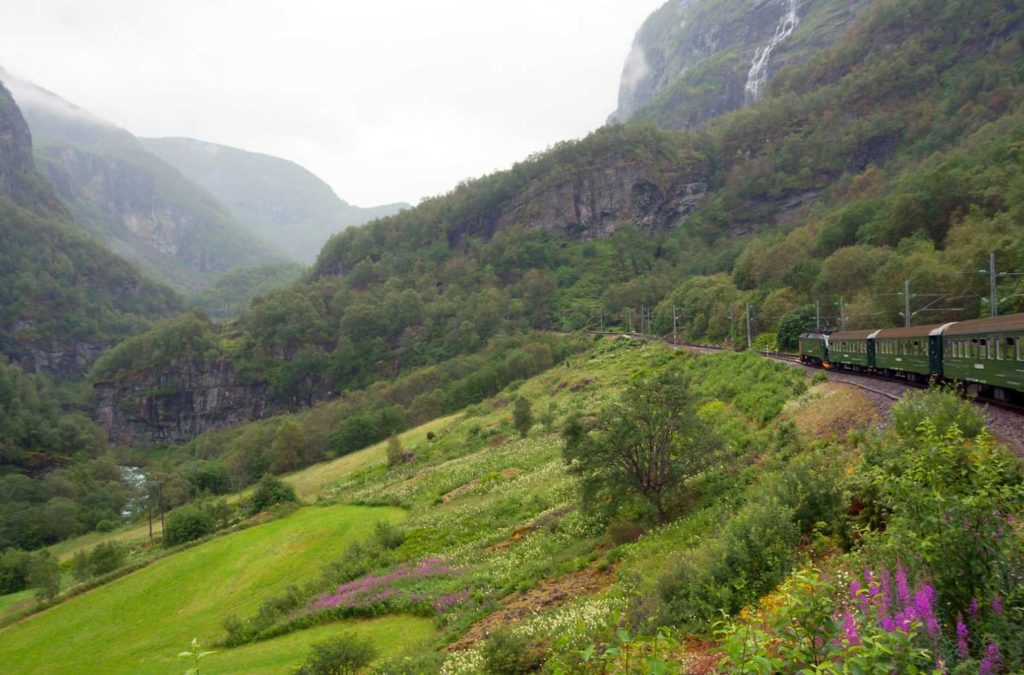
Explore Mount Floyen
Mount Fløyen is one of the most popular hiking destinations in Norway, known for its stunning views and picturesque landscapes. Located in the city of Bergen, Mount Fløyen offers visitors the opportunity to explore the great outdoors while also enjoying the city’s vibrant culture and historic landmarks. The hike up to Mount Fløyen is a moderate one, and visitors can take a funicular railway to the top if they prefer not to hike. Once at the top, visitors are rewarded with breathtaking views of the surrounding landscape, including the city of Bergen and the nearby fjords.
In addition to hiking, Mount Fløyen offers a range of activities for visitors of all ages, including ziplining, mountain biking, and rock climbing. Visitors can also explore the nearby forest and enjoy a picnic or barbecue in the beautiful natural surroundings.
Visit Oslo Cathedral
Oslo Cathedral, also known as the Oslo Domkirke, is a stunning example of Gothic architecture and a must-visit destination for anyone interested in history and architecture. Located in the heart of Oslo, the cathedral has been an important landmark in the city for over 300 years. The cathedral is known for its intricate carvings, stunning stained-glass windows, and soaring spires, and it has been beautifully preserved over the years.
Visitors to the Oslo Cathedral can explore the interior of the building and marvel at the impressive Gothic architecture. The cathedral is also home to numerous works of art, including sculptures and paintings, that provide a glimpse into Norway’s rich cultural heritage. Visitors can also attend services and concerts in the cathedral, which are open to the public.
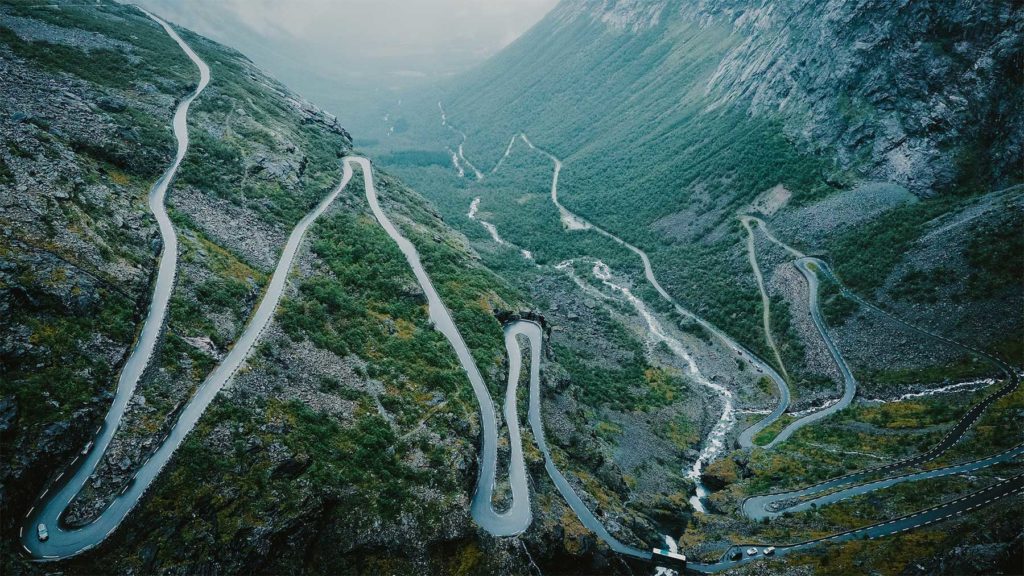
Drive along Atlanterhavsveien (The Atlantic Road)
Atlanterhavsveien, also known as the Atlantic Road, is an 8-kilometer stretch of road that connects several small islands off Norway’s coast. The road is renowned for its stunning views of the ocean and the surrounding mountainside scenery. The drive along the Atlantic Road is a popular tourist activity and is considered one of the most scenic drives in the world.
The Atlantic Road features several bridges and viaducts, which provide panoramic views of the surrounding landscape. Visitors can also stop at several lookout points along the way to take in the stunning views and snap some photos. The road is surrounded by natural beauty, with the ocean on one side and rugged mountains on the other. The Atlantic Road is a must-do experience for any visitor to Norway, providing a unique perspective on the country’s natural beauty and a thrilling driving experience.
Hamnøy village
Hamnøy village is a picturesque destination located in the Lofoten Islands of Norway. The village is known for its stunning natural beauty, with the surrounding mountains and fjords providing a breathtaking backdrop for the colorful wooden houses that line its waterfront streetscapes. The village is a popular destination for photographers and outdoor enthusiasts, as it offers a range of outdoor activities such as hiking, fishing, and kayaking.
Visitors to Hamnøy village can explore the village’s picturesque streets, take in the stunning views of the surrounding landscape, and visit local shops and restaurants. The village is also home to several historic landmarks, including the Hamnøy Church, which dates back to the 19th century. Visitors can also take a ferry to nearby islands, such as Reine and Moskenes, which offer even more stunning views of the Lofoten Islands. Whether you’re interested in outdoor activities or simply appreciate the beauty of natural landscapes, Hamnøy village is a must-see destination in Norway.
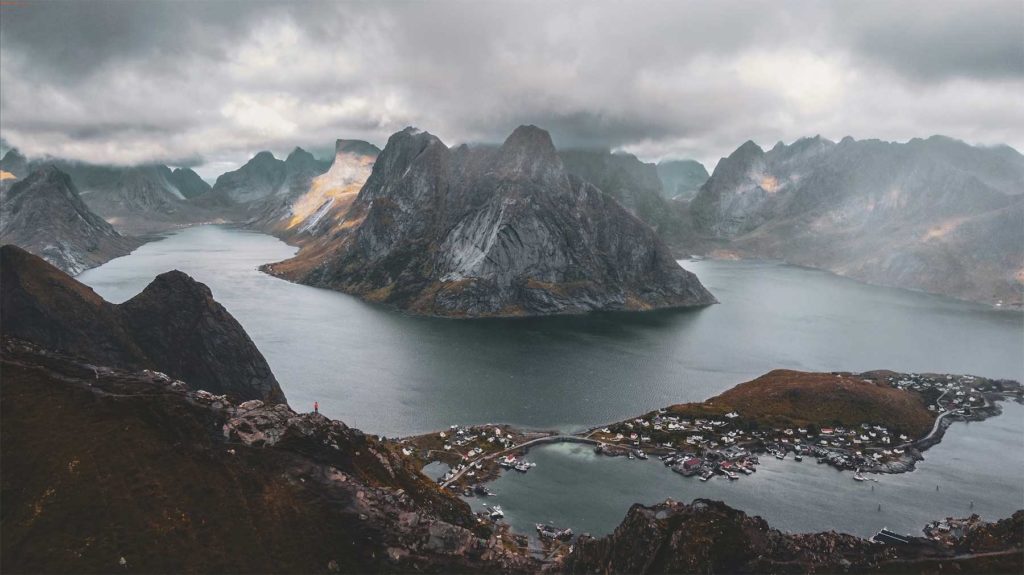
Visit Reine
Reine is a tiny fishing village located on Moskenesøya island in the Lofoten archipelago, and it’s known for its stunning natural beauty and iconic landscapes. The village is surrounded by snow-capped mountains and crystal-clear waters that are teeming with marine life. The village is a popular destination for outdoor enthusiasts, as it offers a range of activities such as hiking, fishing, and kayaking.
Visitors to Reine can explore the village’s picturesque streets, take in the stunning views of the surrounding landscape, and visit local shops and restaurants. The village is also home to several historic landmarks, including the Reine Church, which dates back to the 18th century. Visitors can also take a ferry to nearby islands, such as Hamnøy and Moskenes, which offer even more stunning views of the Lofoten Islands. Whether you’re interested in outdoor activities or simply appreciate the beauty of natural landscapes, Reine is a must-visit destination in Norway.
Explore Bergen
Bergen is Norway’s second-largest city, known for its colorful wooden buildings, historic landmarks, and lively harborfront area. The city’s picturesque streets are lined with restaurants, shops, and galleries, making it a popular destination for visitors interested in culture, history, and art. The city’s harborfront area is particularly lively, with a range of activities for visitors of all ages, including boat tours, seafood restaurants, and outdoor markets.
Visitors to Bergen can explore the city’s many landmarks, including the UNESCO World Heritage-listed Bryggen wharf, the Fish Market, and the Fløyen funicular railway. The city is also home to several art museums, including the KODE Art Museums, which feature works by Norwegian and international artists.

Experience Voringsfossen waterfall
Vøringsfossen waterfall is one of the most impressive natural wonders in Norway, located in the heart of the country’s scenic Hardangervidda plateau. With a height of 183 meters, Vøringsfossen is one of Europe’s highest waterfalls and is renowned for its thundering sound, which can be heard from several kilometers away. Visitors to Vøringsfossen can experience the power and beauty of this magnificent waterfall up close, with several viewing platforms and trails offering stunning views of the waterfall and the surrounding landscape.
In addition to the waterfall itself, the Vøringsfossen area is also known for its hiking trails and scenic vistas. Visitors can explore the nearby Hardangervidda National Park, which offers opportunities for hiking, skiing, and other outdoor activities. The Vøringsfossen area is a must-visit destination for anyone interested in natural beauty and outdoor activities, providing a glimpse into Norway’s stunning natural landscape.
Jotunheimen National Park
Jotunheimen National Park is one of the most popular destinations for outdoor enthusiasts in Norway, known for its stunning natural beauty and dramatic landscapes. The park is home to some of Scandinavia’s highest peaks, including Galdhøpiggen, which is the tallest mountain in Northern Europe. Visitors to Jotunheimen can explore the park’s glaciers, lakes, rivers, valleys, and lush forests, which offer a range of activities such as hiking, skiing, and fishing.
In addition to its natural beauty, Jotunheimen National Park is also home to several cultural landmarks, including historic mountain lodges and traditional Norwegian villages. Visitors can explore these cultural sites to learn about Norway’s rich cultural heritage and experience traditional Norwegian architecture and design.
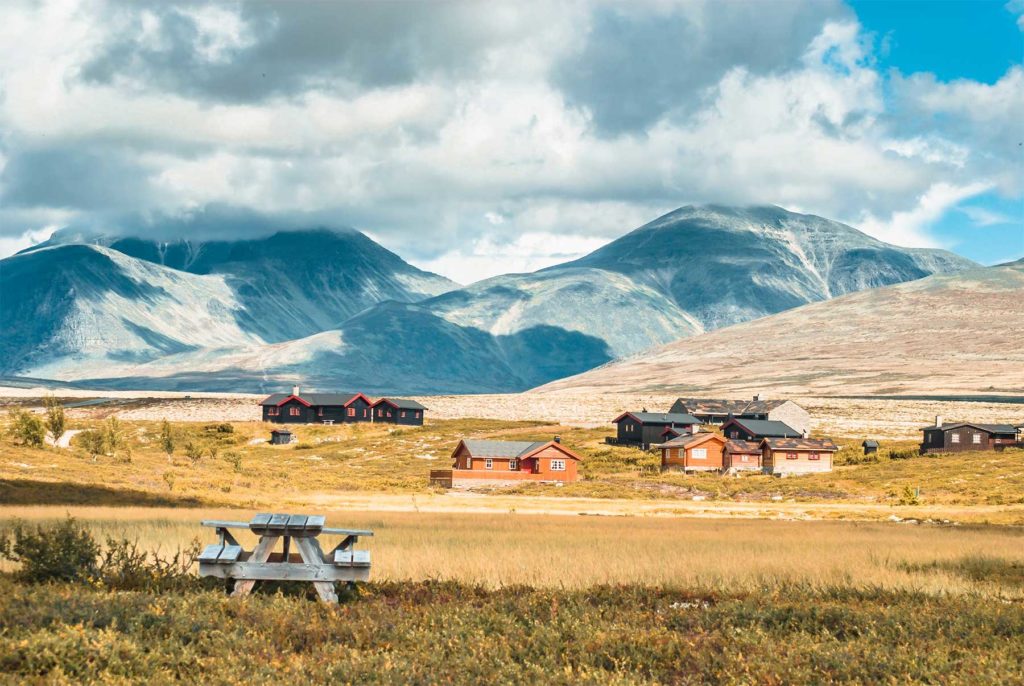
Where to stay in Norway – the iconic and luxurious hotels
The Thief – Located in Oslo, The Thief is a luxurious and contemporary hotel with stunning views of the Oslofjord. The hotel features an art collection with works by well-known Norwegian artists, a rooftop bar, and a restaurant that serves locally sourced seafood.
Hotel Continental – Situated in the heart of Oslo, Hotel Continental is a historic and elegant hotel that has been welcoming guests since 1900. The hotel features luxurious rooms and suites, a renowned restaurant, and a wellness center that offers massages and other treatments.
Hotel Norge – Located in Bergen, Hotel Norge is a modern and stylish hotel that offers breathtaking views of the city’s harbor. The hotel features luxurious rooms and suites, a rooftop bar, and a restaurant that serves Nordic cuisine.
The Britannia Hotel – Located in Trondheim, The Britannia Hotel is a historic and luxurious hotel that has been welcoming guests since 1870. The hotel features beautifully appointed rooms and suites, a renowned spa, and a Michelin-starred restaurant.
Grand Hotel – Situated in Oslo, the Grand Hotel is a historic and luxurious hotel that has hosted many famous guests over the years, including Nobel Peace Prize laureates. The hotel features luxurious rooms and suites, a renowned restaurant, and a rooftop bar that offers stunning views of the city.

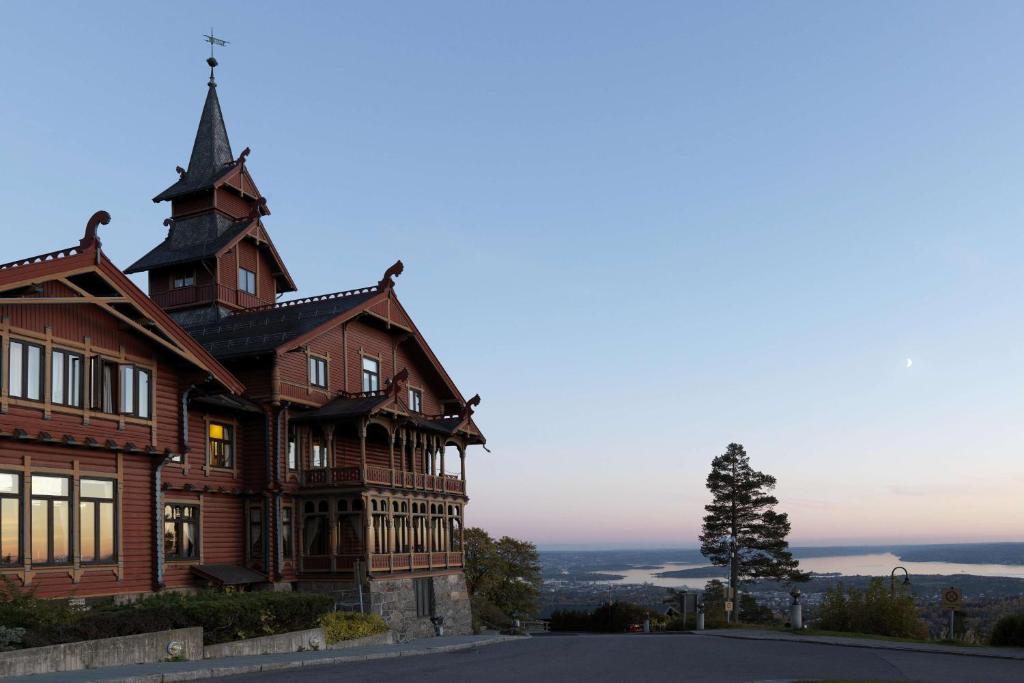
Farris Bad – Located in Larvik, Farris Bad is a luxurious spa hotel that offers a range of treatments and therapies, as well as stunning views of the sea. The hotel features stylish and contemporary rooms and suites, as well as a restaurant that serves locally sourced seafood.
The Amerikalinjen – Situated in Oslo, The Amerikalinjen is a historic hotel that was once the headquarters of the Norwegian America Line. The hotel features stylish and modern rooms and suites, a renowned restaurant, and a cocktail bar that serves innovative drinks.
Lysebu Hotel – Located in Oslo, Lysebu Hotel is a luxurious hotel that offers breathtaking views of the surrounding mountains and forests. The hotel features beautifully appointed rooms and suites, a renowned restaurant, and a wellness center that offers massages and other treatments.
Storfjord Hotel – Situated in the fjords of Western Norway, Storfjord Hotel is a luxurious hotel that offers stunning views of the surrounding mountains and valleys. The hotel features beautifully appointed rooms and suites, a renowned restaurant, and a wellness center that offers a range of treatments.
The Scandic Holmenkollen Park – Located in Oslo, The Scandic Holmenkollen Park is a historic and luxurious hotel that offers breathtaking views of the city and the surrounding mountains. The hotel features stylish and modern rooms and suites, a renowned restaurant, and a spa that offers a range of treatments and therapies.
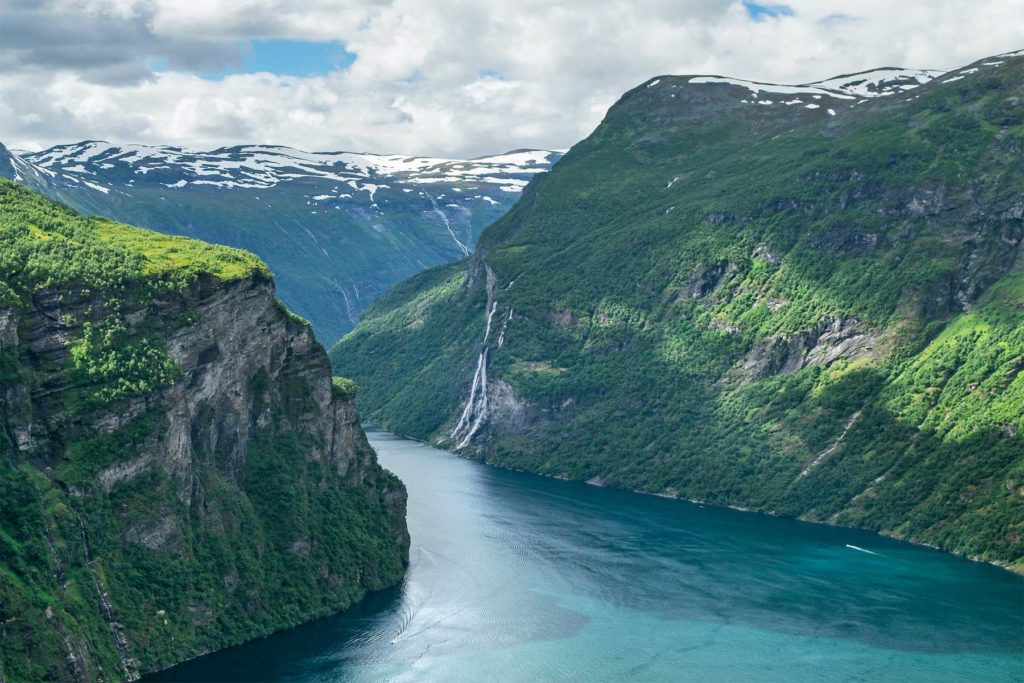
Food and drinks
Food specialities of Norway
Norwegian cuisine is rich in flavor and heavily influenced by the country’s unique geography and climate. With its long coastline and mountainous landscapes, seafood and game are staples of Norwegian cuisine, and traditional dishes often incorporate fresh, locally sourced ingredients.
One of Norway’s most iconic dishes is lutefisk, a traditional dish made from dried cod that has been soaked in water and lye to create a gelatinous texture. Another classic dish is pinnekjøtt, which is made from salted and dried lamb ribs that are then steamed and served with mashed swede and potatoes.
In addition to these traditional dishes, Norway is also known for its seafood, including salmon, herring, and mackerel, which are often served smoked or cured. Other popular Norwegian specialties include reindeer meat, which is often served as a stew or roasted, and brunost, a sweet and caramelized cheese that is often eaten with bread or crackers.
Norwegian desserts are also noteworthy, with specialties including krumkake, a thin and crispy cookie, and lefse, a soft and flat bread that is often served with butter and sugar.


Top 10 restaurants in Norway
Maaemo – Located in Oslo, Maaemo is a three-Michelin-star restaurant headed by Chef Esben Holmboe Bang. The restaurant specializes in Nordic cuisine and offers a tasting menu that showcases locally sourced and seasonal ingredients.
Kontrast – Also located in Oslo, Kontrast is a one-Michelin-star restaurant led by Chef Mikael Svensson. The restaurant focuses on local and sustainable ingredients, with a menu that changes frequently based on the season and availability of ingredients.
Re-Naa – Located in Stavanger, Re-Naa is a one-Michelin-star restaurant headed by Chef Sven Erik Renaa. The restaurant offers a tasting menu that showcases the flavors of Norwegian cuisine, with a focus on locally sourced seafood and game.
Sabi Omakase – Situated in Stavanger, Sabi Omakase is a sushi restaurant led by Chef Roger Asakil Joya. The restaurant offers an omakase-style tasting menu that showcases the freshest seafood and highest quality ingredients.
Fagn – Located in Trondheim, Fagn is a one-Michelin-star restaurant headed by Chef Jonas Andre Nåvik. The restaurant offers a tasting menu that focuses on locally sourced and seasonal ingredients, with a focus on flavors and textures.
Maeemo Takeover – A pop-up restaurant by the team behind Maaemo, Maeemo Takeover offers a unique culinary experience that brings Nordic cuisine to unexpected locations.
Credo – Located in Trondheim, Credo is a farm-to-table restaurant led by Chef Heidi Bjerkan. The restaurant sources ingredients directly from local farms and producers, with a menu that changes frequently based on the season and availability of ingredients.
Speilsalen – Located in Tromsø, Speilsalen is a fine dining restaurant located in the iconic Arctic hotel, The Edge. The restaurant offers a menu that showcases local seafood and game, with a focus on bold and flavorful dishes.
Statholdergaarden – Located in Oslo, Statholdergaarden is a fine dining restaurant led by Chef Håvard Wetland. The restaurant offers a menu that combines classic French techniques with local Norwegian ingredients, resulting in dishes that are both elegant and flavorful.
Galt – Situated in Oslo, Galt is a farm-to-table restaurant led by Chef Kim Sjøgren. The restaurant sources its ingredients directly from local farmers and producers, with a focus on creating dishes that are both simple and delicious. The menu changes frequently based on the season and availability of ingredients, ensuring that each visit is a unique and memorable culinary experience.

Shopping, taxes and tipping in Norway
In Norway, taxes are included in the listed price of goods and services, so you won’t be charged an additional sales tax when shopping or dining out. However, it is important to note that Norway has a high cost of living, so prices for goods and services may be higher than what you’re used to in other countries.
When it comes to dining out, it is common for restaurants to include a service charge in the bill, which is usually around 10%. This means that tipping is not expected in Norway, although it is still appreciated if you received exceptional service. Some restaurants may have a tip jar at the counter or leave a spot for a tip on the credit card receipt, but this is not the norm and is entirely at your discretion.
It is worth noting that many Norwegians use credit or debit cards for most transactions, including small purchases like coffee or snacks. Cash is accepted, but not as commonly used as in other countries. Some small businesses may not accept credit cards, so it is always a good idea to have some cash on hand just in case.
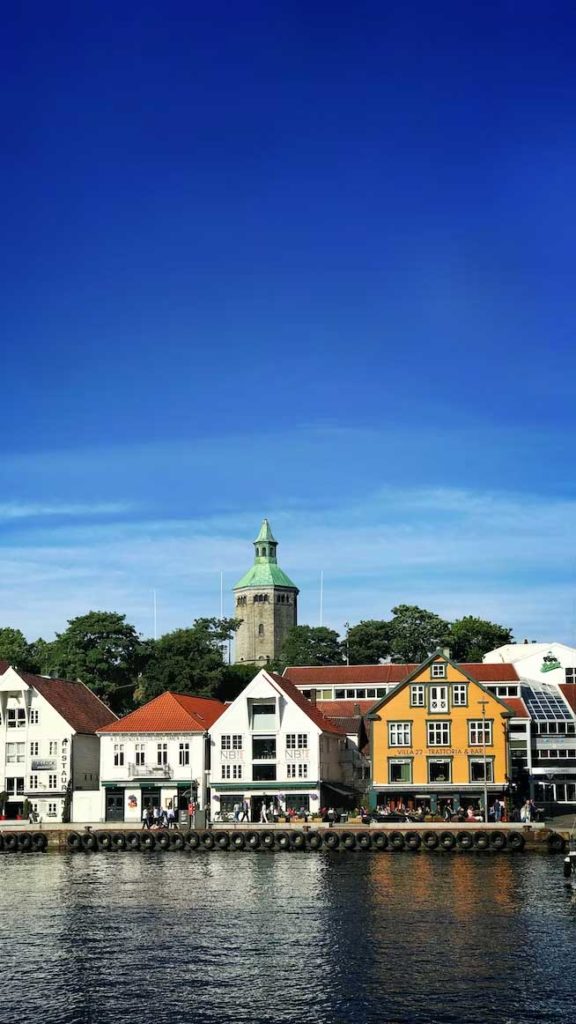
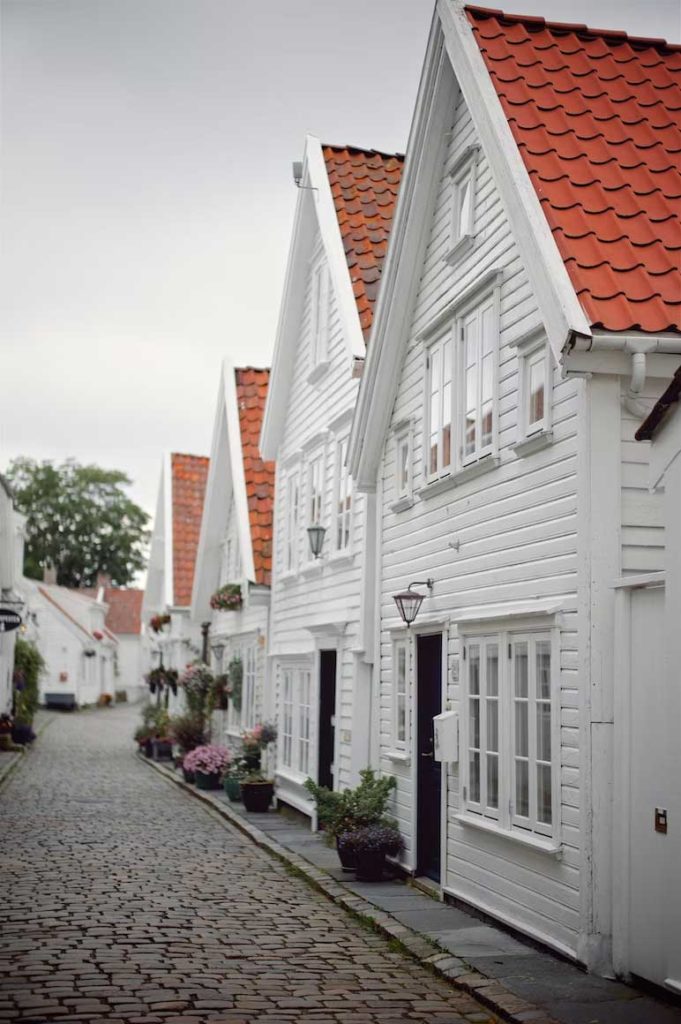
What not to do in Norway, things to avoid
There are a few things that travelers should be aware of in order to avoid offending locals or breaking cultural norms. Here are some things to avoid doing in Norway:
Don’t be loud or disruptive in public spaces. Norwegians value quiet and respectful behavior in public, so avoid being overly loud or disruptive in restaurants, cafes, or other public spaces.
Don’t litter or damage the environment. Norway is known for its pristine natural beauty, and locals take great pride in keeping their environment clean and well-preserved. Be sure to dispose of trash properly and avoid damaging or disturbing natural areas.
Don’t jaywalk or ignore traffic signals. Norway has strict traffic laws, and pedestrians are expected to follow crosswalks and obey traffic signals. Ignoring these rules can result in a fine or other penalties.
Don’t assume everyone speaks English. While many Norwegians do speak English, it is still important to make an effort to learn some basic Norwegian phrases and show respect for the local language.
Don’t make assumptions about cultural norms or beliefs. Norwegians value diversity and tolerance, so it is important to be respectful of different cultures, religions, and lifestyles.

Safety and security in Norway
Norway is generally considered a safe and secure country for visitors. The crime rate in Norway is low, and violent crime is rare. However, like any country, visitors should take basic precautions to ensure their safety.
One of the main safety concerns in Norway is the weather. The country can experience harsh winter conditions, with icy roads and heavy snowfall. Visitors should take precautions such as wearing appropriate clothing, using public transportation instead of driving, and checking weather reports before traveling.
Another safety concern in Norway is the potential for outdoor accidents. Norway is known for its stunning natural beauty, but visitors should be aware of the risks associated with outdoor activities such as hiking, skiing, and climbing. It is important to take appropriate safety measures, such as wearing proper gear and checking weather and trail conditions before embarking on outdoor adventures.
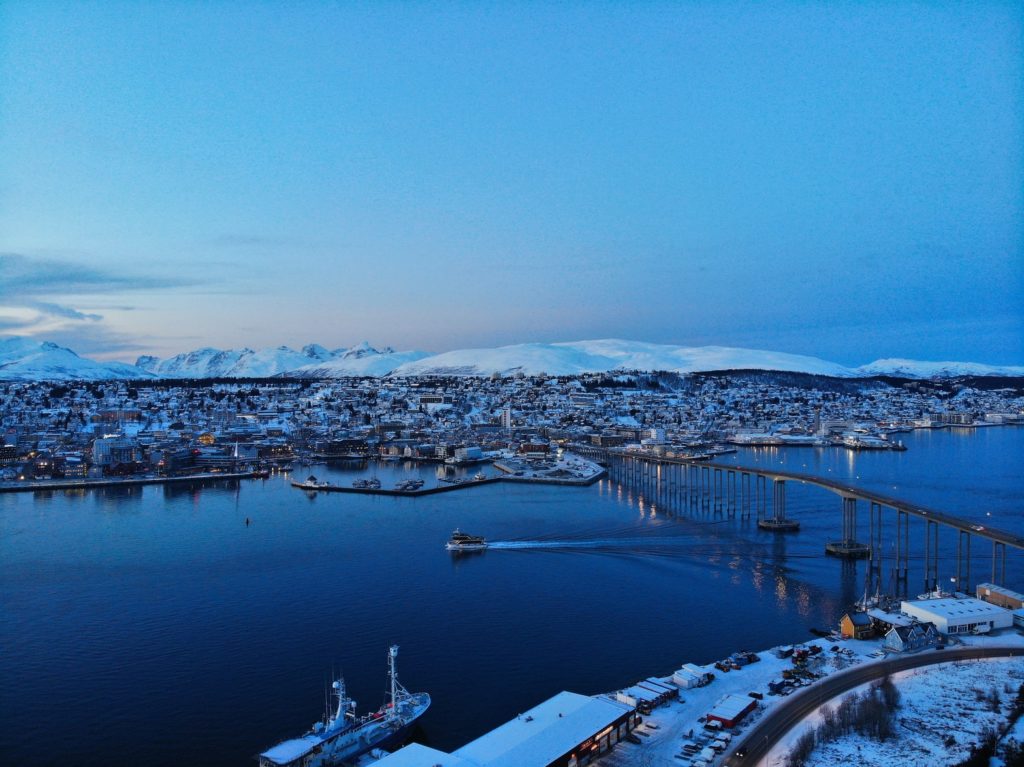
Final advice for travelers
Electricity and Charging: Norway has a standard voltage of 230V and uses type C or F plugs. Visitors from countries that use a different voltage or plug type will need a power adapter to charge their electronic devices.
Cash and Card: Norway is a cashless society, and most places accept credit and debit cards. However, it is still a good idea to carry some cash for smaller purchases or for emergencies. ATMs can be found in most cities and towns.
Language: Norwegian is the official language of Norway, but most Norwegians speak English fluently. Visitors should have no trouble communicating in English.
Climate: Norway has a cold and temperate climate, with mild summers and cold winters. Visitors should pack appropriate clothing for the season, including warm jackets and waterproof gear.
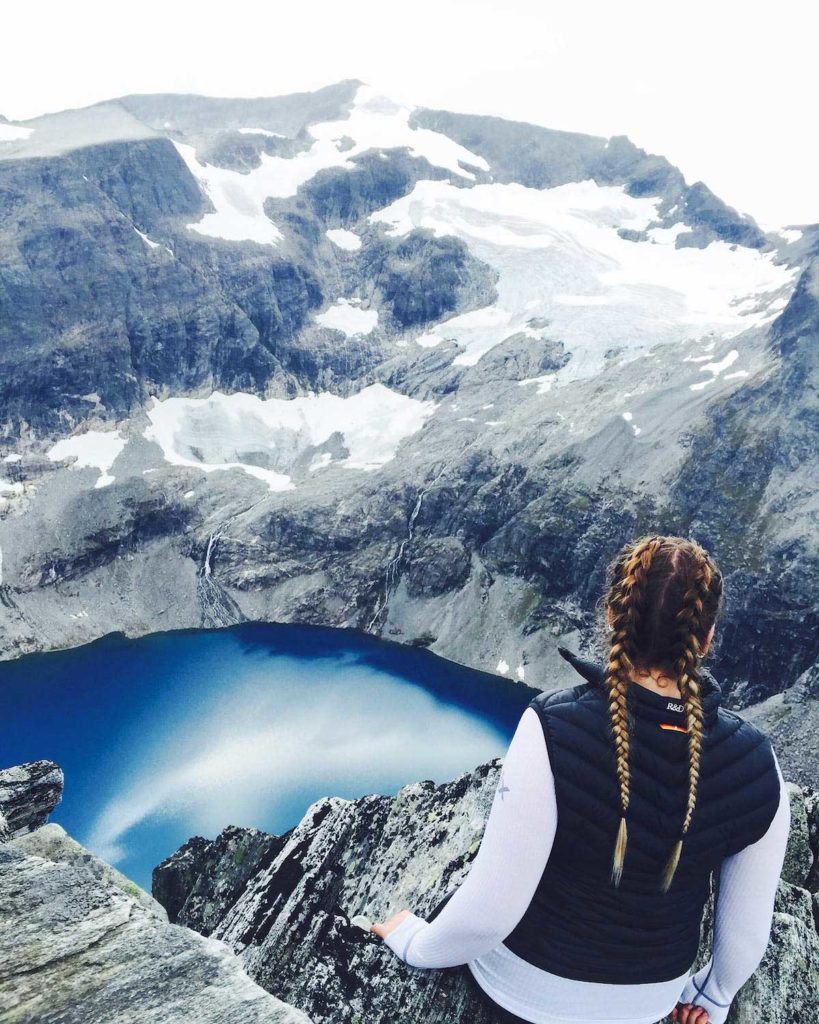

–
See our other Travel Guides